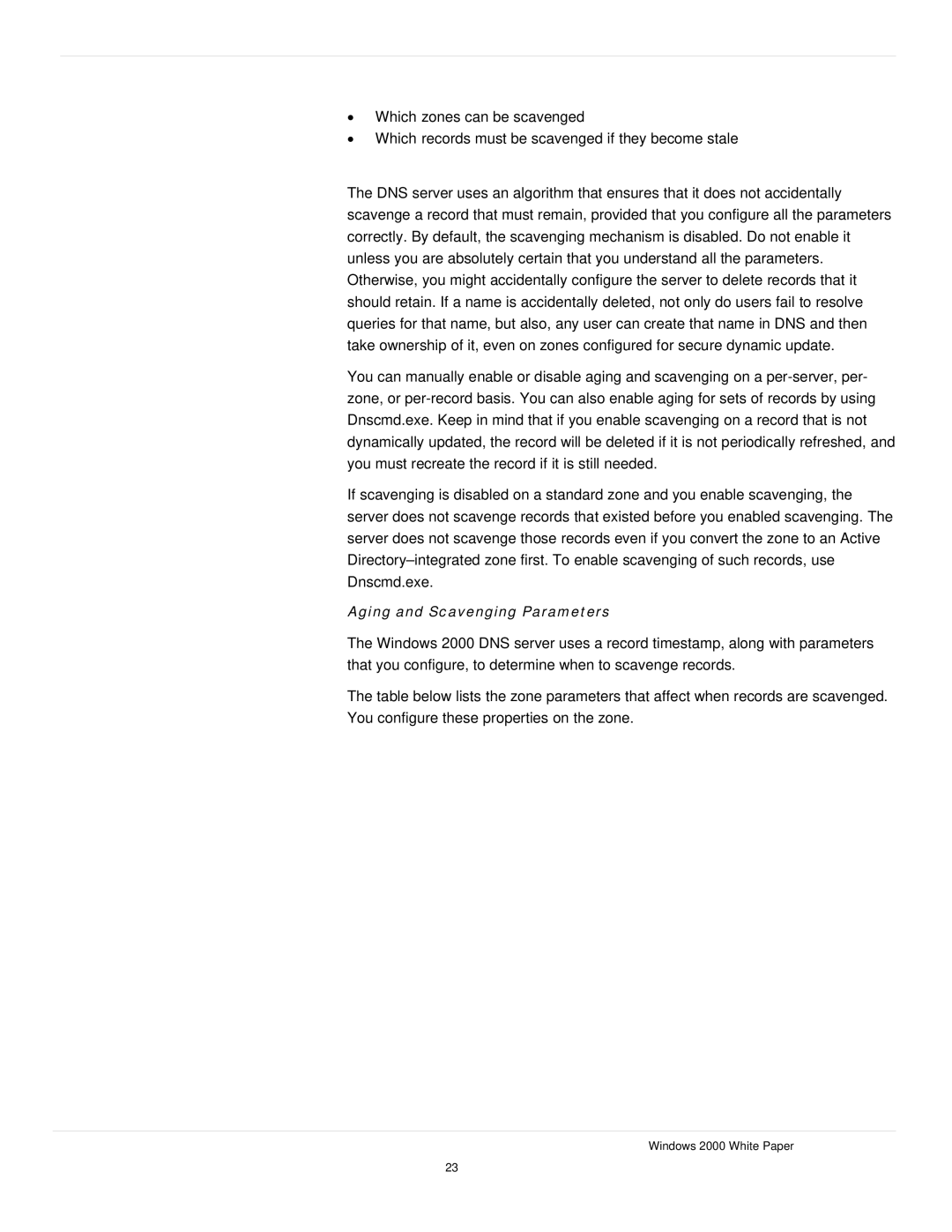
•Which zones can be scavenged
•Which records must be scavenged if they become stale
The DNS server uses an algorithm that ensures that it does not accidentally scavenge a record that must remain, provided that you configure all the parameters correctly. By default, the scavenging mechanism is disabled. Do not enable it unless you are absolutely certain that you understand all the parameters. Otherwise, you might accidentally configure the server to delete records that it should retain. If a name is accidentally deleted, not only do users fail to resolve queries for that name, but also, any user can create that name in DNS and then take ownership of it, even on zones configured for secure dynamic update.
You can manually enable or disable aging and scavenging on a
If scavenging is disabled on a standard zone and you enable scavenging, the server does not scavenge records that existed before you enabled scavenging. The server does not scavenge those records even if you convert the zone to an Active
Aging and Scavenging Parameters
The Windows 2000 DNS server uses a record timestamp, along with parameters that you configure, to determine when to scavenge records.
The table below lists the zone parameters that affect when records are scavenged. You configure these properties on the zone.
Windows 2000 White Paper
23
